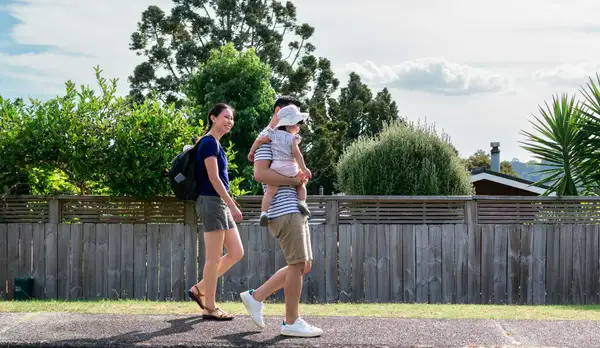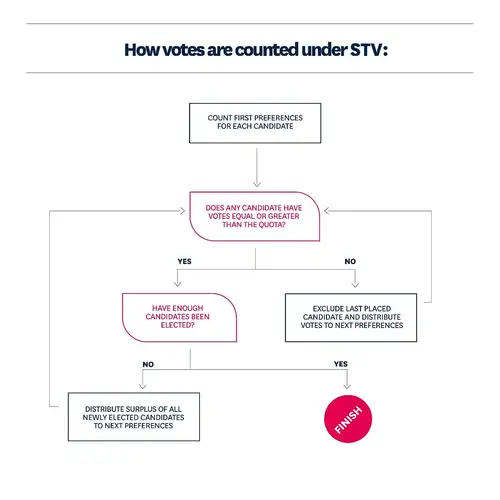Ngā pōtitanga ā-rohe me te pōti
-
Local elections and voting



Let’s make Aotearoa New Zealand the most active and inclusive local democracy in the world.
Aotearoa New Zealand has a proud voting history. Our voter turnout for the general election is in the top ten of the OECD countries. We were the first country to give women the right to vote in 1893. Now, our local democracy needs your investment – and your vote.
Councils, community and local boards have a huge role to play in supporting wellbeing of our people, whānau and communities. That’s why voting in local elections is so important. It’s your chance to pick the people that you think will best represent you in local decision making.
Local body elections take place every three years on the second Saturday in October. The last election was in 2022, meaning the next elections will take place in 2025.
When it comes time for local elections, LGNZ works alongside Taituarā Local Government Professionals Aotearoa, to encourage wide community engagement, support candidates as they stand and improve voter turn-out in local authority elections.
Who can vote in the elections?
Anyone who is enrolled can vote in local elections and have a say on the people who will make decisions on what happens in their community.
You can vote for your mayor, councillors and your community and local board members. If you are on the Māori electoral role you can vote for councillors in the Māori wards and constituencies.
You’re eligible to enrol and vote if you are 18 years or older, a New Zealand citizen or permanent resident, and you’ve lived in Aotearoa New Zealand continuously for 12 months or more at some time in your life.
For more detail visit the Electoral Commission website.
What are Māori wards and constituencies?
Māori wards and constituencies create areas where only those on the Māori Parliamentary electoral roll vote for the candidates in that ward/constituency.
The Māori wards and constituencies sit alongside the general wards of each city or district. Their aim is to ensure Māori are represented in local government decision-making, just like the dedicated electorate seats in Parliament.
Only people on the Māori electoral roll can vote for candidates standing for a Māori ward and constituency. Similarly, only those on the general electoral roll can vote for those candidates standing for a general ward/constituency.
How do I get enrolled?
If you are registered to vote in Parliamentary elections, you are automatically enrolled as a residential elector to vote in local authority elections.
If you have never been enrolled, it’s easy to do so. Visit the Electoral Commission website.
Who can stand for election?
To be eligible to stand for election candidates have to be:
- A New Zealand citizen;
- Enrolled on the parliamentary electoral roll (anywhere in Aotearoa New Zealand),
- Have lived at their current address for at least one month however, they do not need to live in the area in which they wish to stand, and
- Be nominated by two people (a candidate cannot nominate themselves).
A person cannot stand if they are currently serving a prison term of three years or more.
How does voting work?
Most council/kaunihera elections use the ‘First Past the Post’ system (FPP) where the candidate with the most votes, wins.
However, at the last election in 2022, 15 councils used the Single Transferable Voting system (STV). In this system, voters rank candidates in order of preference.
First past the post: This is a very simple method of electing candidates where the candidate with the most votes, wins. However, some people have argued that the results may not always reflect the wishes of the majority of voters. While one candidate may have the highest number of votes, that number may come in under 50% and show that the majority of voters wanted someone else to win.
Single Transferable Vote: Here, voters rank candidates in order of preference. Under STV, you would write “1” next to the name of your favourite candidate, “2” next to your second favourite candidate and so on.
You still only have one vote, but by showing your preference for candidates, your vote can be transferred if your most preferred candidate is so popular, they don’t need all their votes to cross the election threshold or is not popular with other voters.
In an STV election, candidates must reach a certain number of votes to get elected. This is called a quota and is based on the total number of votes and the number of vacant positions. This process is illustrated in the diagram below:
-
Voter guidance
 LGNZ provides guidance and resources for voters in New Zealand, including information about voting systems and eligibility.
LGNZ provides guidance and resources for voters in New Zealand, including information about voting systems and eligibility. -
Candidates' guidance
 All you need to know about standing for election in local body elections.
All you need to know about standing for election in local body elections.
